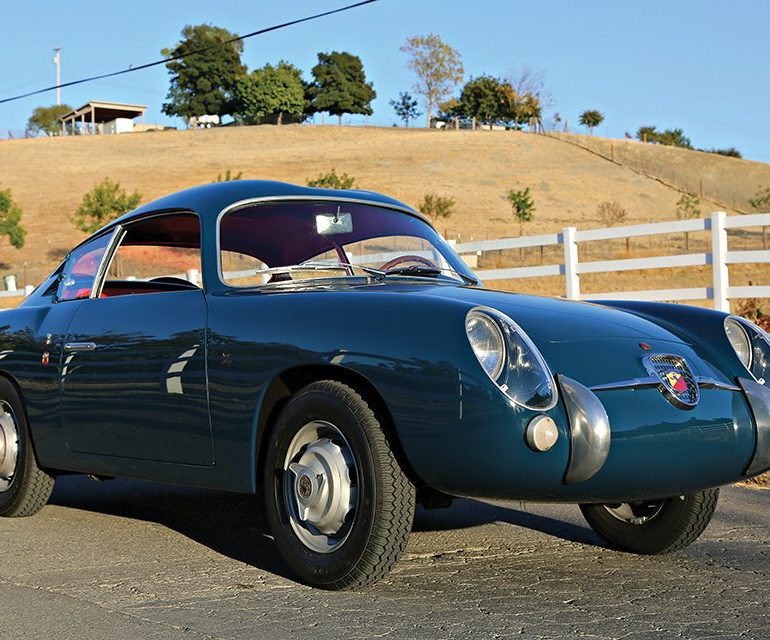1958 Fiat-Abarth 750 GT Zagato
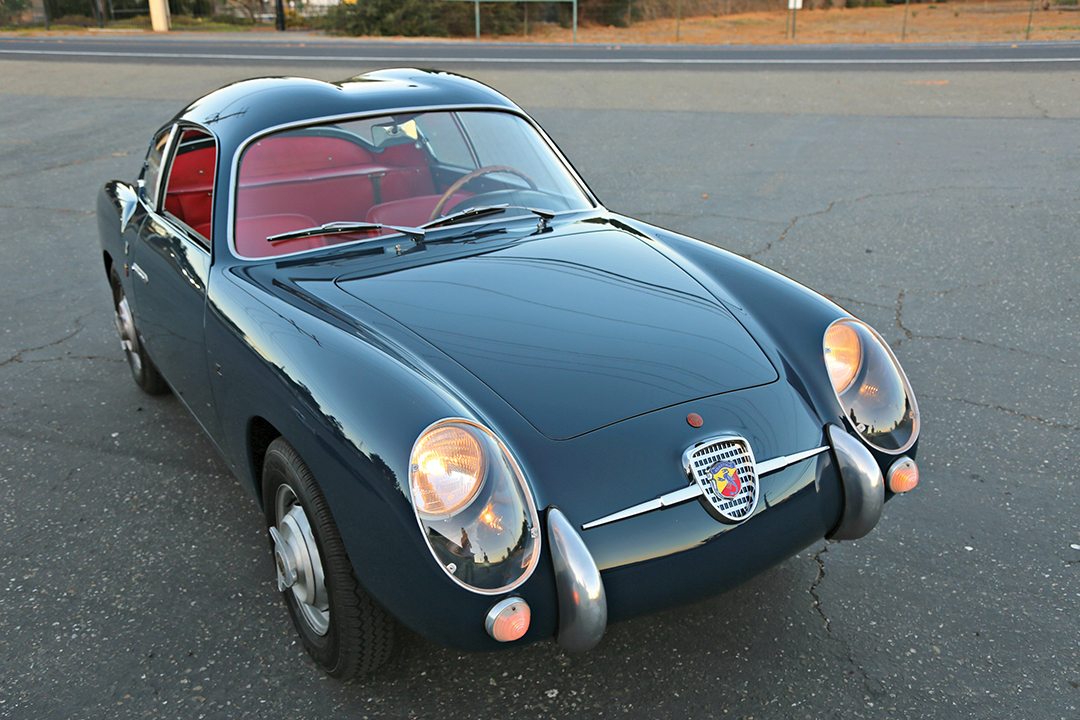
There is much to love about the Italian “Etceterini.” The term broadly refers to low-production, small engine, tiny hand-made cars created by small and many times obscure, Italian manufacturers. The styling of these cars is often exotic and unusual, crafted by artisans and racers with the freedom to produce cars not for the masses, but for the automotive connoisseur who appreciates fine things in small packages. The post-war Italian coachbuilding renaissance, combined with North American demand for sporting cars, helped foster a burgeoning interest in Italian cars during the 1950s. Brands like Bandini, Siata, Cisitala, Nardi and Moretti may not be known by everyone, but the name Abarth is known by many today, thanks to its association with Fiat.
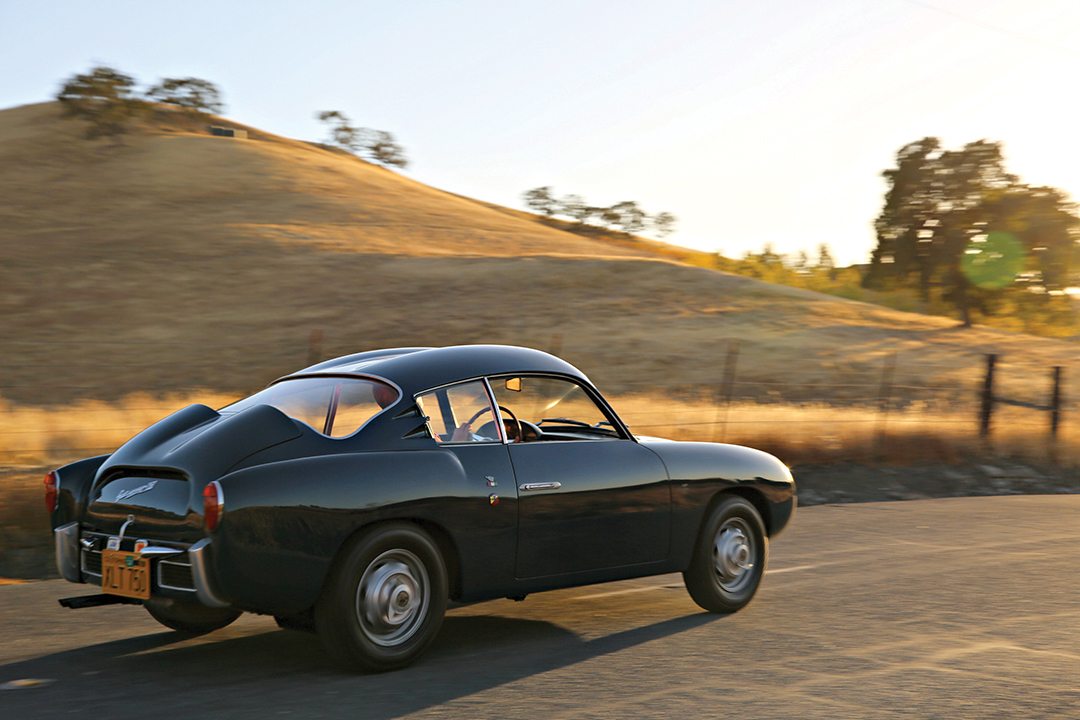
Carlo Abarth was born in Austria in 1908, but lived most of his life in Italy. After a brief time with Cisitala, in 1949 he started the Abarth & Company, adopting his astrological sign, the scorpion, as the company logo. Abarth built and raced cars, but his main business was developing and selling aftermarket Abarth brand accessories and performance parts, mostly for Fiats. His throaty-sounding muffler and exhaust systems are music to any Italian car lover’s ears and were his most successful products throughout the ’50s and ’60s.
In late 1955, Fiat introduced the 600 and Abarth wasted no time in marketing a line of speed equipment for the new car, as well as a line of modified 600 sedans starting in 1956 with the 750-cc Fiat Abarth Derivazione. These hotrod, stock-bodied Fiats were successful, but Carlo Abarth also wanted to produce something special, calling on carrozzeria Zagato to create a special body to mate with his Fiat-based performance drivetrain. In 1956, the new Abarth Zagato 750GT would be on the streets and tearing up racetracks.
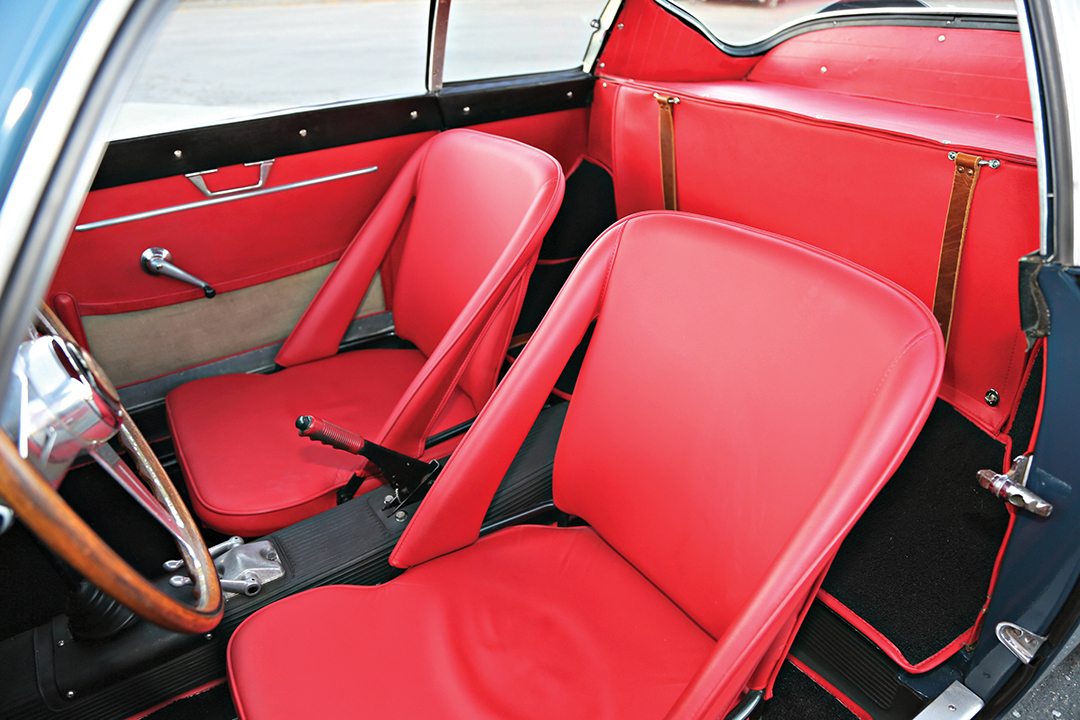
The body Zagato designed for Abarth was made of aluminum skinned over a metal super-structure utilizing a Fiat 600 chassis and floor pan. The soft, smooth aerodynamic body features Zagato’s famous “double bubble” roof design. Besides creating a unique and exotic look, the lines of the double bubble roof allow for more headroom inside the tiny car. The trunk lid also has two bubbles that serve as air scoops for the rear-mounted engine. Ride height is lower than a stock Fiat 600 chassis, and spring rates are modified by Abarth as well.
At the heart of the little beast is a three main bearing Fiat 600 engine, bored and stroked from its original 633-cc displacement to 747-cc. A billet steel stroker crank, high-compression pistons, longer duration camshaft, larger valves and a bigger carburetor completed the package, upping the original Fiat 600 engine’s 23 bhp at 4,000 rpm to 43 bhp at 5,800 rpm. Curb weight is just 1,250 pounds. In 1958, the British car magazine Autocar tested a 1958 Abarth Zagato 750 GT, recording a blistering standing quarter-mile time of 20 seconds and a top speed of 95 mph. This may not seem fast, but it is for a car with this much horsepower. Indeed it was enough juice to have the diminutive coupes finish 1, 2 and 3 in the 1957 Mille Miglia.
Abarth of the North
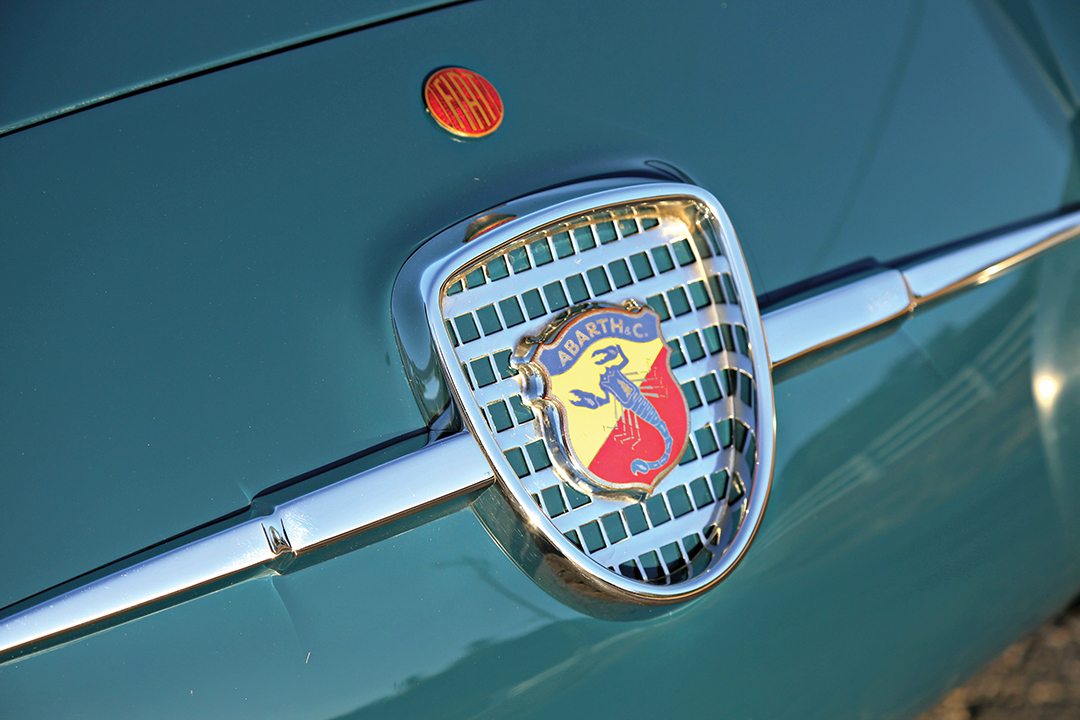
The beautiful 1958 Abarth Zagato 750 GT featured here, chassis number 455320, was delivered new to Bill MacDonald of Montreal, Quebec, Canada. It was first registered in Canada as a standard Fiat 600, which sold new for far less than a Zagato, to avoid the heavy taxes Quebec had at the time. MacDonald drove the Abarth and raced it at local tracks including the Harewood Acres in Ontario (Harewood Acres closed in 1970.) In 1962, MacDonald purchased a new twin-cam Abarth Bialbero and sold his Zagato 750 GT to Alan Indge of Leaside, Ontario, who owned a Fiat 600 equipped with all the Abarth performance parts at the time. Indge and his wife Pat were true racing enthusiasts and in 1959 helped form the first chapter of the British Automobile Racing Club (BARC), Ontario Centre, the only one outside of the UK.
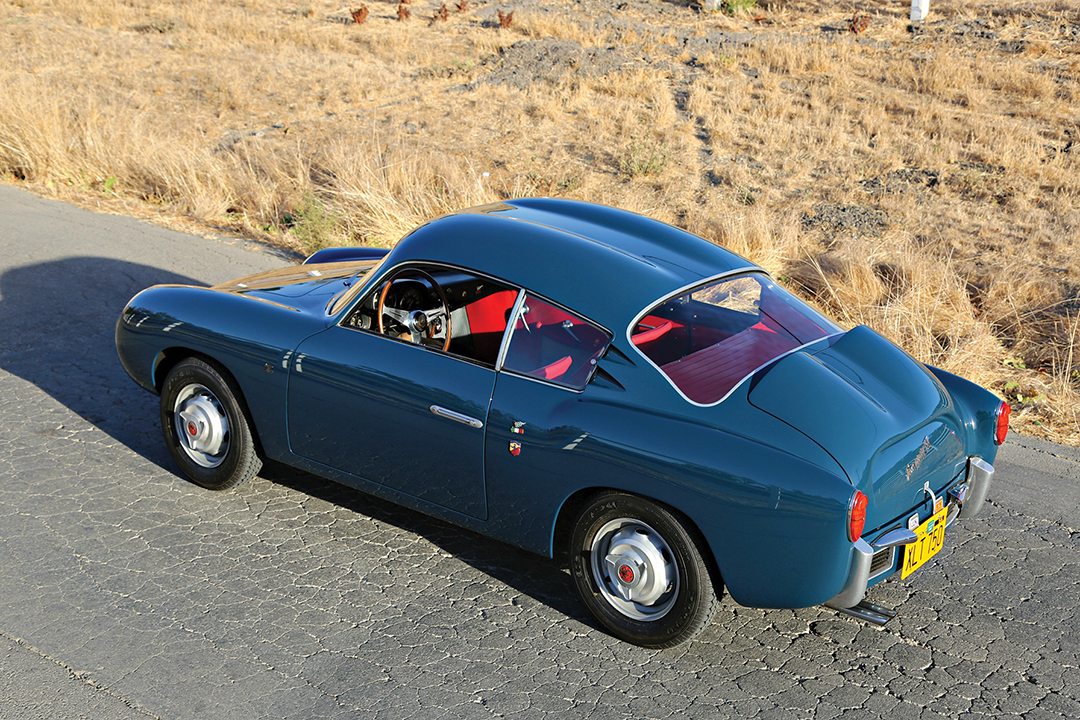
Indge did not waste any time in using his newly acquired Abarth Zagato, taking the little “Double Bubble” Abarth to car shows, races and hillclimbs. One vintage photo shows the car on display at the Annual Speed Sport Show in 1962 with Miss Speed Sports herself (who also qualified to be Miss Tungsten Carbide that year) proudly posing next to it. That same year the Zagato was in the paddock at the Canadian Grand Prix were Indge was thrilled to see and meet all the international drivers who came over to admire the little car. The day was made perfect when two retired racing legends, Stirling Moss and Juan Manual Fangio both let him get a photo of them with the Zagato.
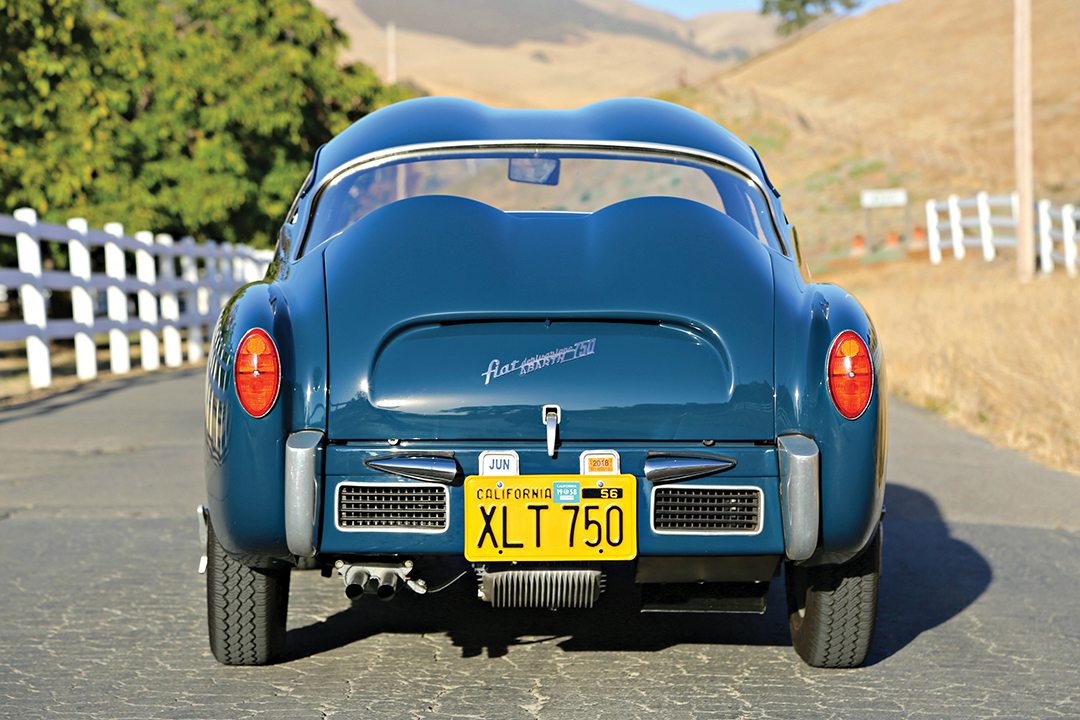
That same year Indge entered the car in a couple of hillclimbs. The first event did not go so well, as Indge explains, “If you break the rear axle shaft between the U-joint and the wheel bearing, the wheel falls off. It usually happens when you pop the clutch and you sit there like an idiot wondering why you aren’t going anywhere. It happened to me at a hillclimb, which was fortunate because there was nobody behind me. I had to borrow a trailer to get the car home. There was plenty of help to lift the car onto the trailer. Getting it off when I got home was another story…”
Undeterred, Indge entered the Zagato in another hillclimb, this time at the 1962 Rockwood Hillclimb in Ontario. Both Indge and his wife Pat participated in the event, taking turns driving both their Morris Cooper and the Abarth Zagato. Indge taught his wife how to drive the Zagato. She drove in it competitions, stylishly sporting a crash helmet with a Michelin tire tread graphic on it, before she even had a license to drive on the street. Pat remembers, “Would you believe I learned to drive in that car. I passed my test on the first go around! My husband figured if I could learn to second-gear accelerate in that baby then there would never be a car that I couldn’t drive…. And he was right!” Pat was recognized by the British Automobile Racing Club when she was named BARC Lady Champion in 1962.
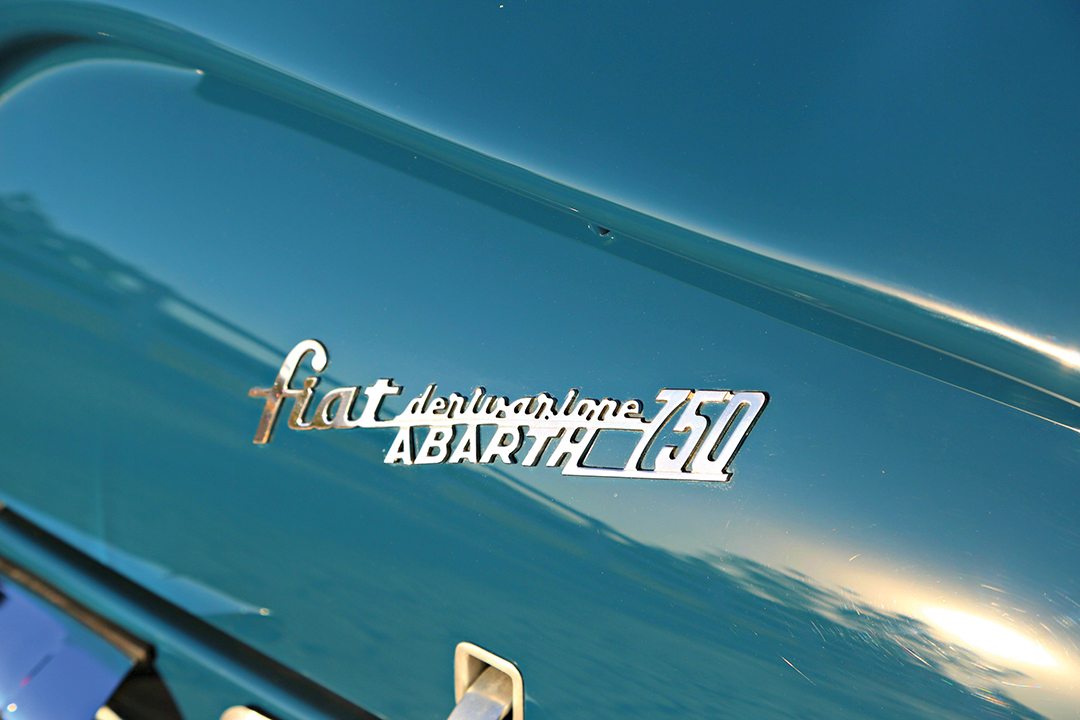
Things went well that day as Ingle recalls, “The Zagato was entered in the under 1000-cc class and the only thing that could beat it up the hill was a Lotus Seven with a Cosworth Ford engine, which is no disgrace, and there was only a 2/100ths of a second difference. Since the Rockwood Hillclimb is now extinct, the car was and still is the 750-cc record holder. The hill was fairly short, very twisty and so steep that you had to change down to first for the hairpin at the top. It was tremendous fun since you never went fast enough to get into trouble. The hillclimb was timed by putting a ‘Hockey Stick’ with a pressure switch under the front wheel of the car, which started the clock and stopped it by a string across the road at the top. Because of the slippery shape of the Zagato, the string would slide over or under it and not stop the clock. This meant instead of the usual two runs up the hill, the Zagato could guarantee you at least a half dozen.”
After World War II, many airfields where closed and their wide, smooth runways and taxi lanes made them ideal to be converted to racetracks in the 1950s. One such track was Harewood Acres in southern Ontario. These tracks were often operated on a shoestring budget and had to be occasionally reconfigured to compensate for the slow deterioration of the surface over time to keep them safe. One day, Indge and his Abarth Zagato received a lesson in how dangerous an old airfield can be when one of his tires caught an expansion joint while making a corner. The car tipped over, sliding on its side before rolling onto its double-bubble roof, before coming to a stop. Indge was not hurt, and, in true racer spirit, said that he was proud to become a member of “The Spider Club,” by being suspended upside down hanging from the safety belt. Indge fixed the car and continued to drive and race it until he finally sold it to D. Robin Sloan of Toronto, in 1980, after 18 years of fun.
Heading for a new Life in the West
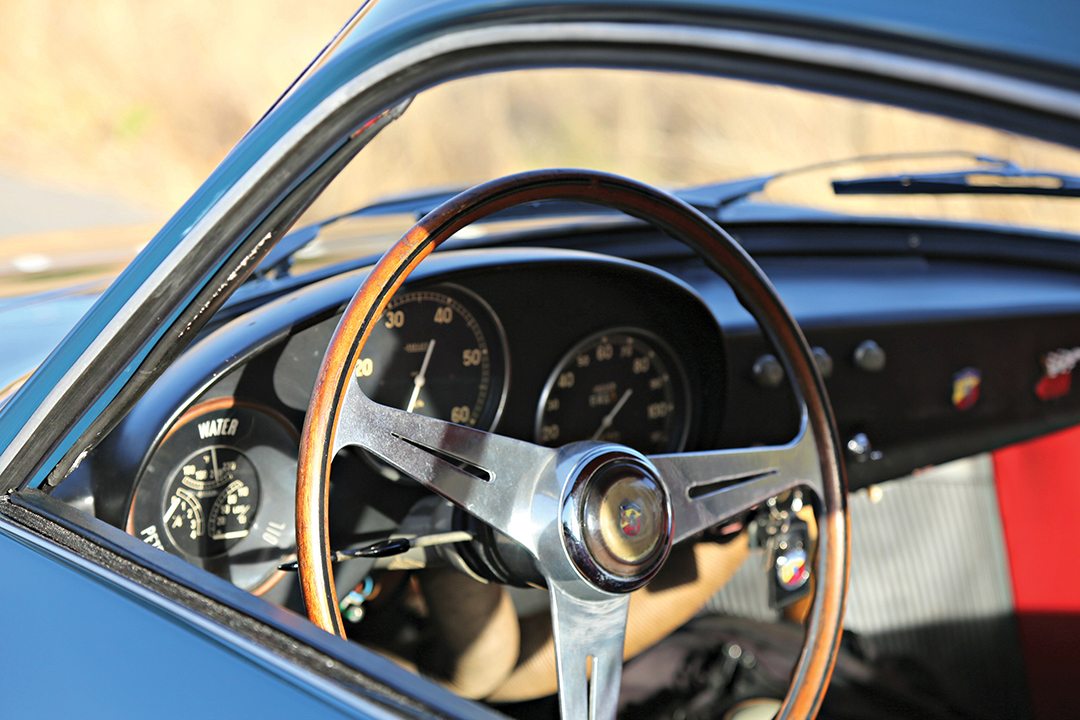
Sloan kept the Zagato for several years. He had begun restoring the car, but never did finish the project after removing most of the trim from the car, however, he did not remove any of the mechanical parts. In January of 1986, Sloan advertised the car in the Toronto newspaper where it caught the eye of Bill Wilkinson, who was living in Montreal at the time. Wilkinson bought the Zagato, which was painted red at the time, but did not have enough money to pay for it. Sloan agreed to accept a deposit, and Wilkinson returned in March with a trailer and the balance of the money and became the third, proud owner of the little car. After returning home to Montreal, he reassembled the car and took it for a drive. Wilkinson recalls, “I assembled the car and excitedly drove it, but ended up toasting the ring and pinion by driving it without any fluid (of course the one thing I didn’t check. I found another ring and pinion and installed it).”
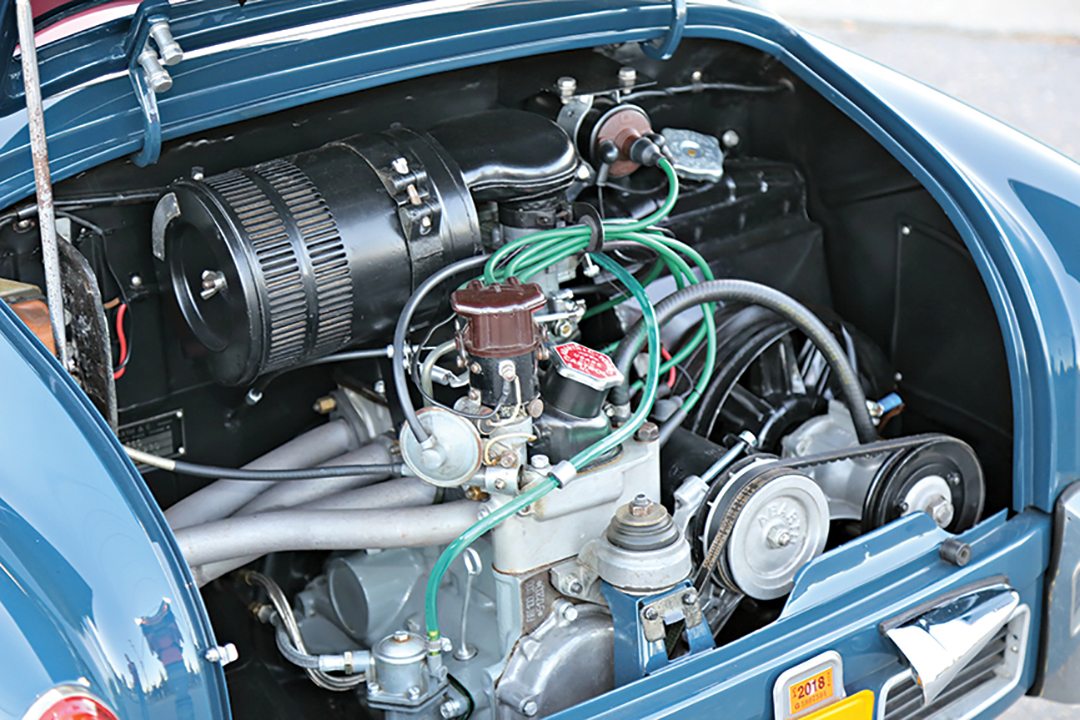
In June of the same year, Wilkinson moved to Vancouver, British Columbia. The Zagato was loaded on a freight train and shipped to Vancouver where it arrived with wet carpets, a few small dents and the ignition key pulled out of the dash. What happened to the car in transit did not curb Wilkinson’s enthusiasm. He joined the Vintage Racing Club as soon as he arrived in Vancouver and entered his first vintage race, the Westwood Historic Races, after only putting 500 miles on the car. “The car was well loved and drew a lot of attention,” says Wilkinson. “It was so much fun to drive on the track! What a fabulous feeling to be on the grid at Westwood in the company of all the great cars that I have admired over the years. The event was uneventful (besides my ear to ear grin, my pounding heart and the smoke pouring into the cabin from the oil spraying on the exhaust) and I came in last! A 427 Cobra SC passed me on the back straight at about three times my speed…I thought I would spin like a top!”
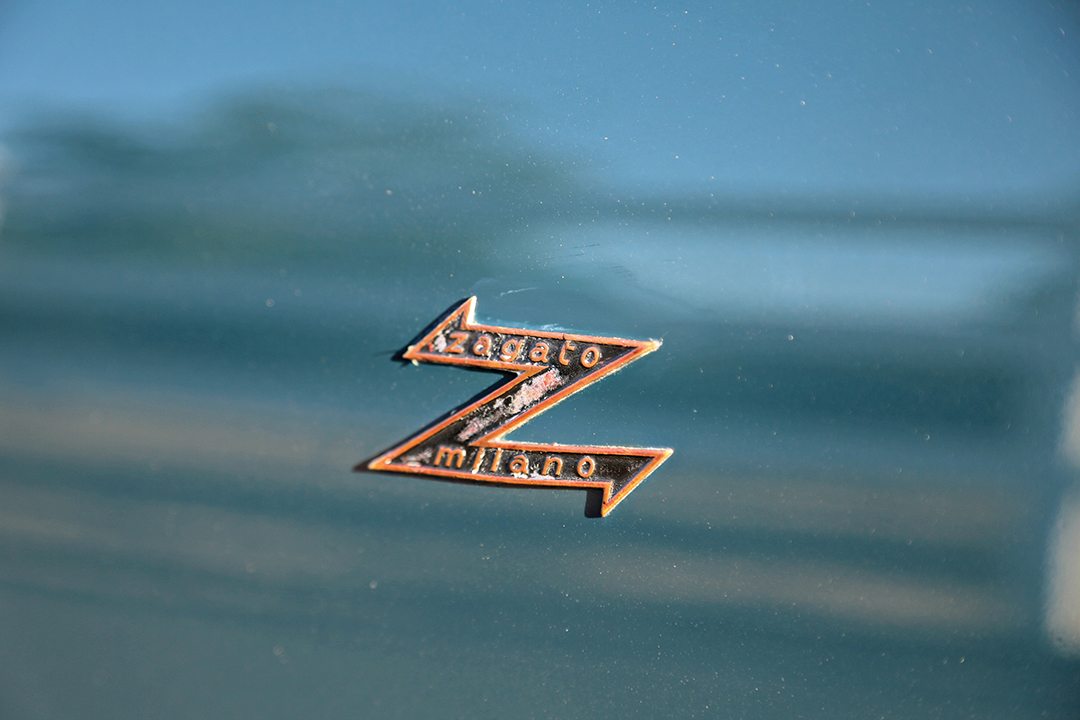
Later that Fall, metal chunks where found in the engine during an oil change, so the engine was pulled down for inspection. One of the cylinder sleeves had slipped down in the bore and hit the crank. Parts where hard to find, so a reverse-rotation 850-cc engine was sourced and installed to get the car on the road again. Wilkinson saved and stored the original engine, thinking he would rebuild it at a later date, but never did.
“I used the car as a daily driver off and on for a while, but had no garage so I had to park it on the street,” Wilkinson remembers. “I eventually found a garage down the block that winter, where a woman let me park it for free. I had stopped driving it at that point and left it there for a few months. When I ran into the lady one day, she mentioned she had sold the house and they were going to bulldoze it. I moved the car that night and the garage was leveled the next day!”
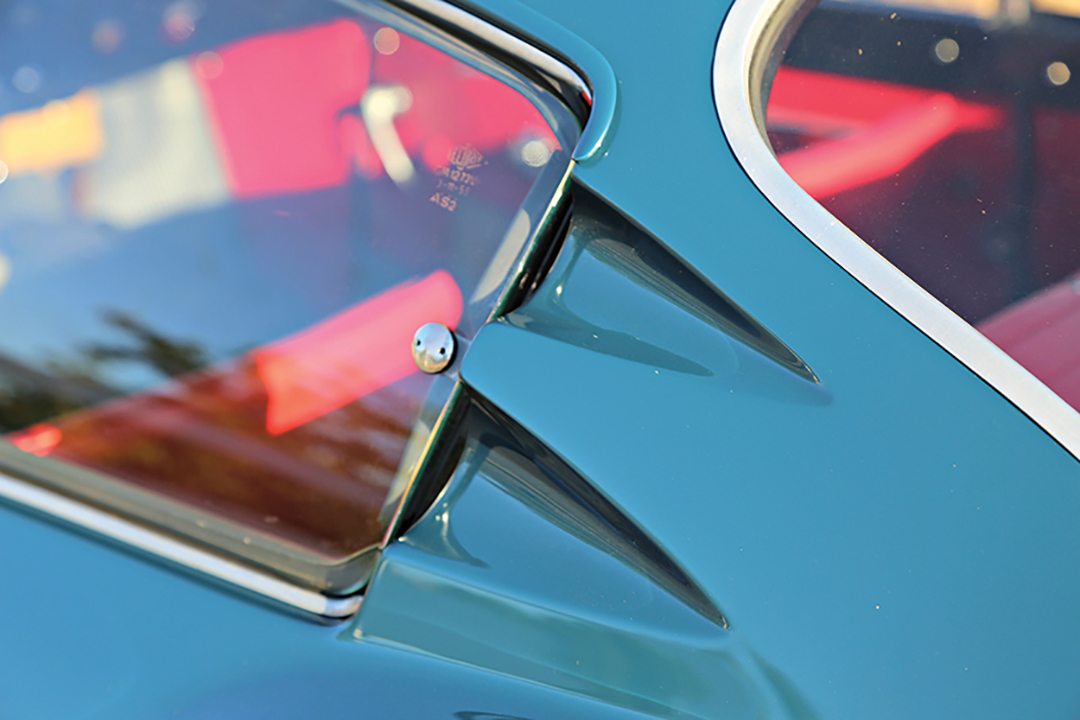
“After that, my brother and I started our automobilia business and I had little time for the car, so it languished in the back of the store for a while, being pulled out for shows and the like. But the Abarth Reunion at Monterey was coming up in 1993, so I decided to get it out of hibernation, do a quick refresh (taller gears in the tranny, new brake lines, etc, etc…) and planned the trip. I don’t think I realized what a big trip that was in a car like that. To top it off, I had just met my future wife and invited her along after knowing her for only three months. Well, I guess that cemented the relationship… we ended up married for 15 years. The trip actually went without a hitch except for only small things. I had a new front spring pack made up at the spring shop, and 50 miles into the trip we heard a one of the leaves fall out on the road. I got it back in and tightened up the pack with a wooden wedge… which stayed on ‘til we sold it. We camped along the way (yes we packed a tent), and covered 3,000 miles in ten days. What a hoot. Driving down the Washington, Oregon and California coast, all on small roads, was a dream.”
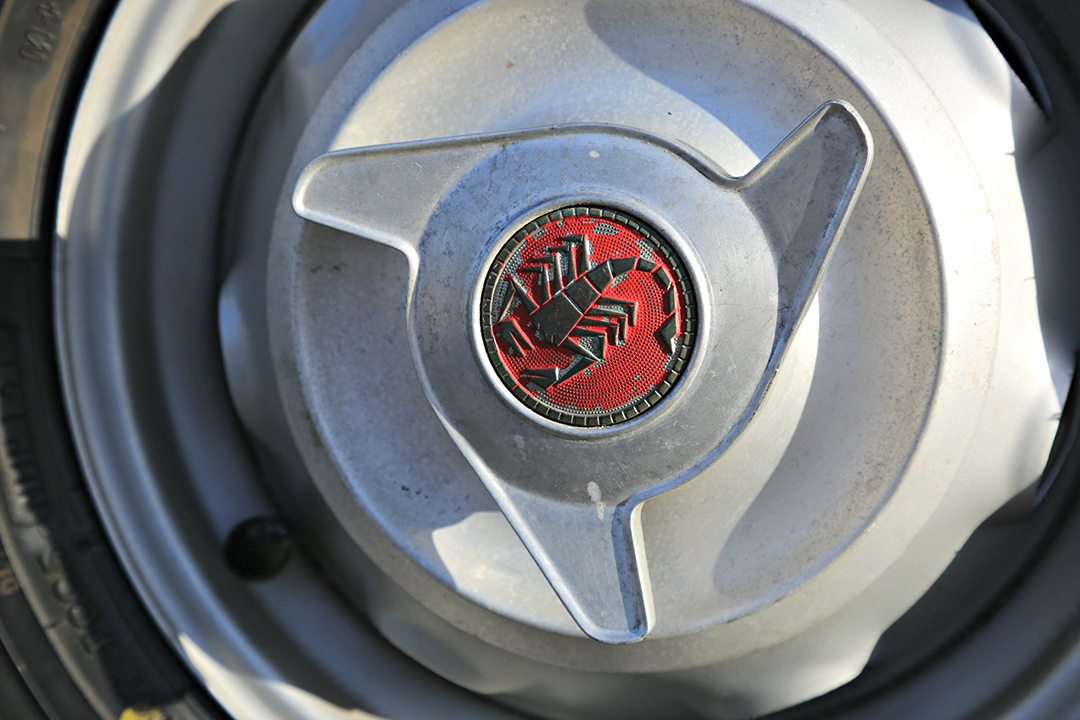
From then on the Zagato was used for rallies, parades, shorter holiday trips and back and forth to work. Wilkinson says: “A few times when I hinted I might like to sell it, my wife said absolutely not! She was a trooper with all the car stuff and got right in there with the car.” Sadly, his wife passed away and afterward he finally sold the car in 2008.
The restoration
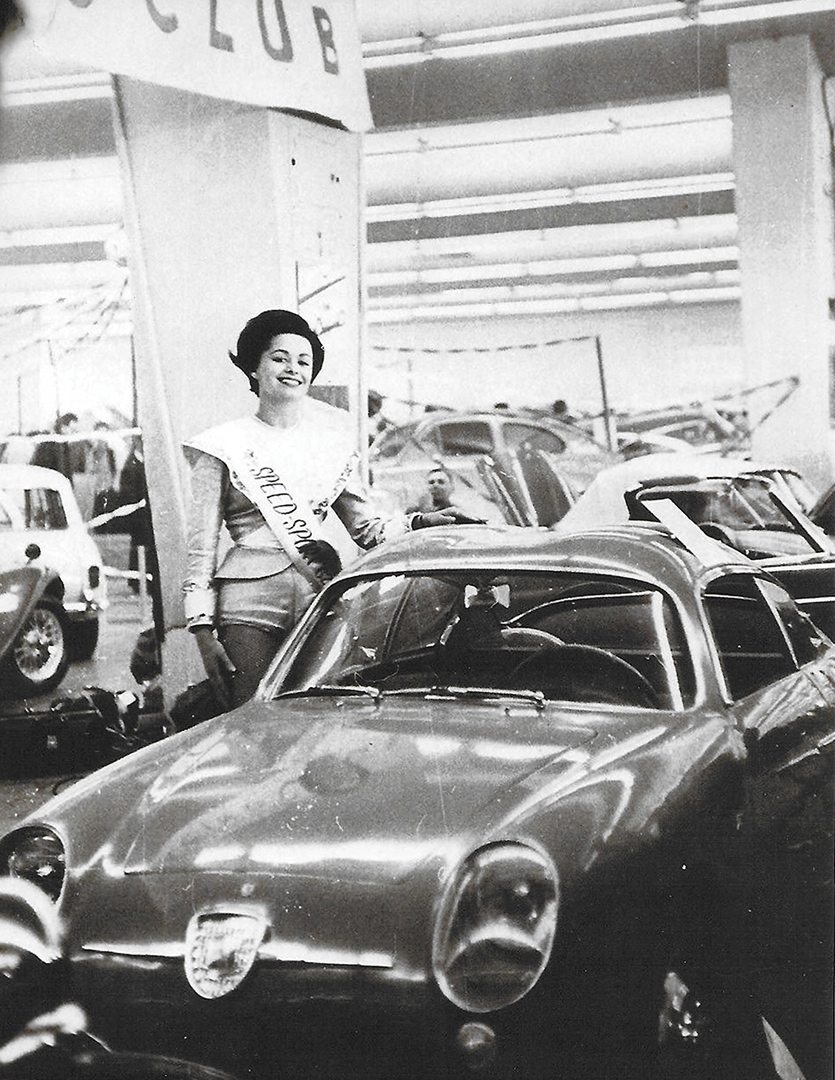
A Northern California collector, Robert Hoffman, acquired the Zagato next, bringing it to The Sports Car Shop in Eugene, Oregon, who had brokered the sale to him. The restoration was done by Joe Potter of the Vintage Underground, in conjunction with The Sports Car Shop. Hoffman was very specific on how the car should be restored, according to The Vintage Underground’s owner, Joe Potter: “His mandate was to return the car to factory specs using all the original components we had for the car. The car was to be assembled with perfect mechanicals and the original components as it was raced in the late ’50s and early ’60s. We were to include the documented special dual braking system, as fitted by the first owner. All interior components that could be salvaged were to be reinstalled and returned to the original color. The half dozen cardboard boxes of components we received with the car were invaluable in allowing us to complete this early, small taillight car with mostly all its original components. Every component found in those boxes were assessed for originality and installed back on the car. Even the original headliner was found and reunited with the interior. While not flawless, it was the one cut and originally fitted in Italy and deserved to be returned to the alloy roof. The door panels are also the originals and care was taken to preserve the original door pocket fabric.”
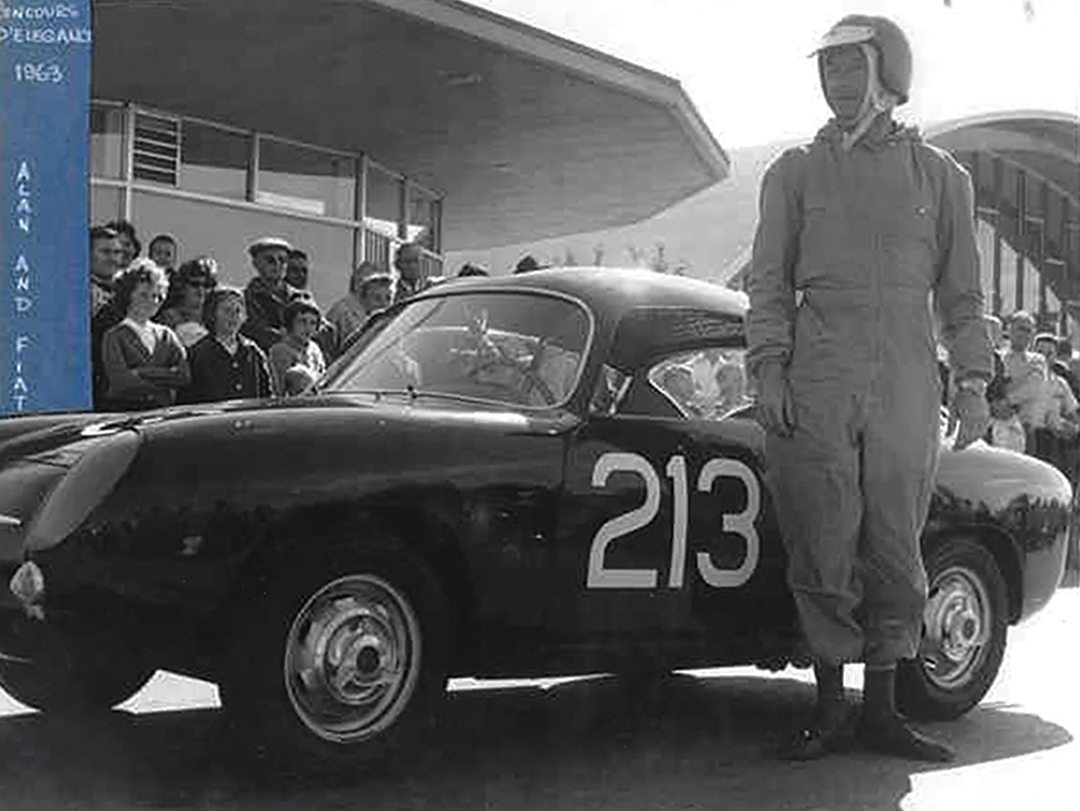
Over 1,000 man hours were spent making the body perfect, as Potter explains: “Rather than refinish or wholesale replace all the exterior trim to perfection, the car was to retain all its original components, age spots and all. They were to be installed with the minor dings, scratches and signs of a life well lived. The deep scuff marks on the special Zagato door handle fitted to the passenger door testifies to the day the car rolled onto the passenger side during competition at a racetrack in Ontario, Canada. The fact that the car was rolled was a total surprise until we stripped the entire car of paint. It explained the reason why the front windscreen was Plexiglas, not glass like an original windscreen. Since we could not refit our new glass windscreen, the race damage and typical corrosion necessitated a full body restoration. All body panels were removed and metal finished inside and out. New original floor pans were fitted and no body component was left unattended. Stripping the body did lead to a pleasant surprise. The original color was discovered on the interior of a rear inner fender panel. We had paint color matched to it and refinished the car to this lovely factory blue.”
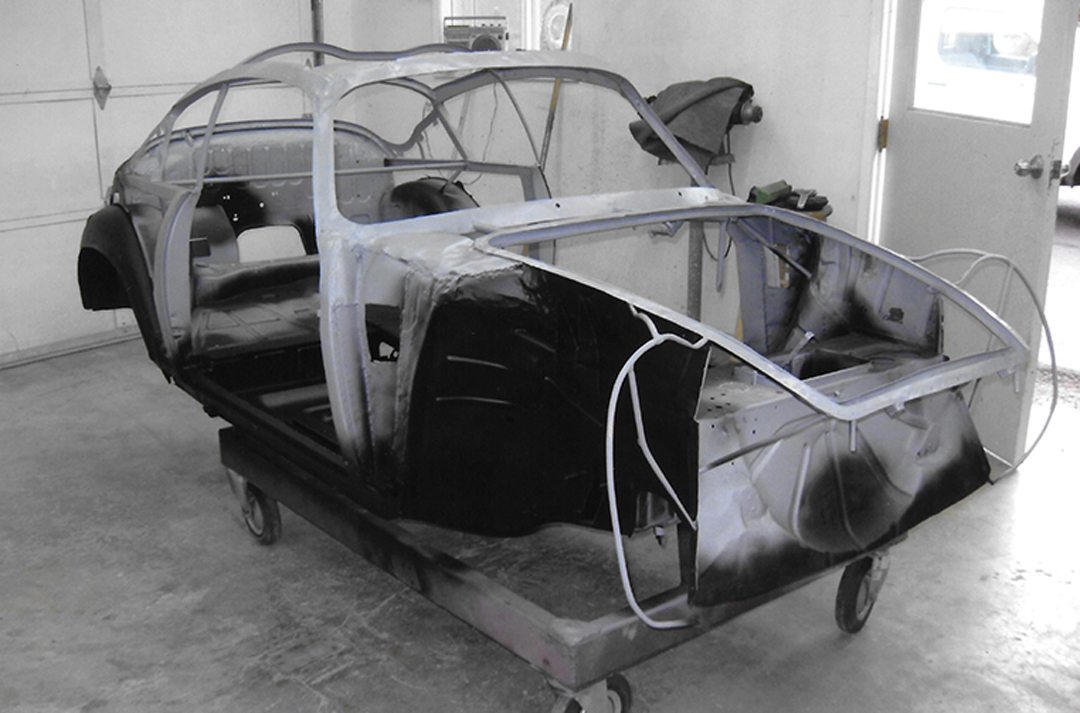
Fortunately, even though the car’s engine had been replaced, the original matching number engine came with the car and was returned to the engine bay once again. The mechanical aspects of the car received the same attention as the body. “Each component was cleaned, inspected, and rebuilt or replaced as needed,” Potter further explains. “The engine is now a working jewel. It has the proper specification Abarth ported cylinder head fitted with larger valves and hard seats. It is also fitted with custom 9.5:1 JE forged pistons, an original Abarth 30-70 grind cam, and new special uprated rods. The Abarth-spec Weber carb and Abarth hand fabricated intake and exhaust, are fitted and make the engine perform and sound as it should. The transaxle was rebuilt and retains the special Abarth final drive and Abarth close-ratio gears. All new bearings, synchros and a new first gear were fitted during the overhaul. All the suspension was rebushed, all axles were wet magnufluxed for cracks and new bearings installed. All brake components were replaced or re-sleeved and rebuilt. An expensive set of original Koni shocks were sourced and installed to complete the return of the chassis to its competition specification. The wheels are all the rare and correct 12-inch, seven-vents type, and are fitted with proper-sized tires.”
Abby gets driven and enjoyed once more
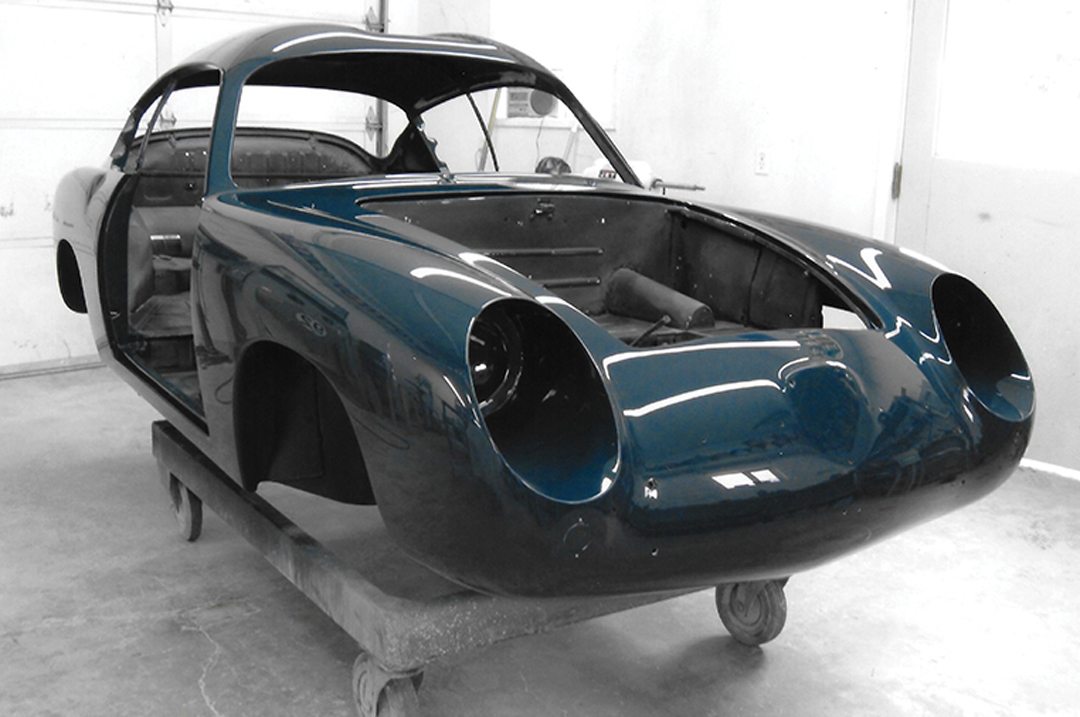
In 2012, the Zagato was sold to a collector in Florida where it remained until it was acquired in 2015 by its current owner, Perry Solomon, of the San Francisco Bay Area. “I really like the shape and style of the Abarth Zagato. One came up for sale in Italy and I was interested, until Donald Osborne located this car for me. I’m glad he did. I love this car and it is fun to drive.”
Indeed it is a fun car to drive or ride in. Even though the car is tiny, there is plenty of room for both driver and passenger. Leg room is adequate, and the “double bubble” roof design is functional in this case, providing plenty of head room. Ride quality is better than you expect for a minute, 1,250-pound car. Even though the engine is rated at only 43 bhp at 5,800 rpm, it scoots along quite briskly when asked. A favorable power to weight ratio is an asset to its performance. That said, Road & Track magazine tested an Abarth 750GT Zagato just like this one in 1958, recording a 0-60 time of 17.3 seconds with the quarter-mile clocked in a leisurely 20.9 seconds at 65 mph. This is where the “art of driving a slow car fast” comes into play, but that only applies today when driving on a twisty country road as we did here. As mentioned earlier, these where highly successful racecars in their time, racing against other cars with similar engine size and sometimes beating bigger-engined cars.
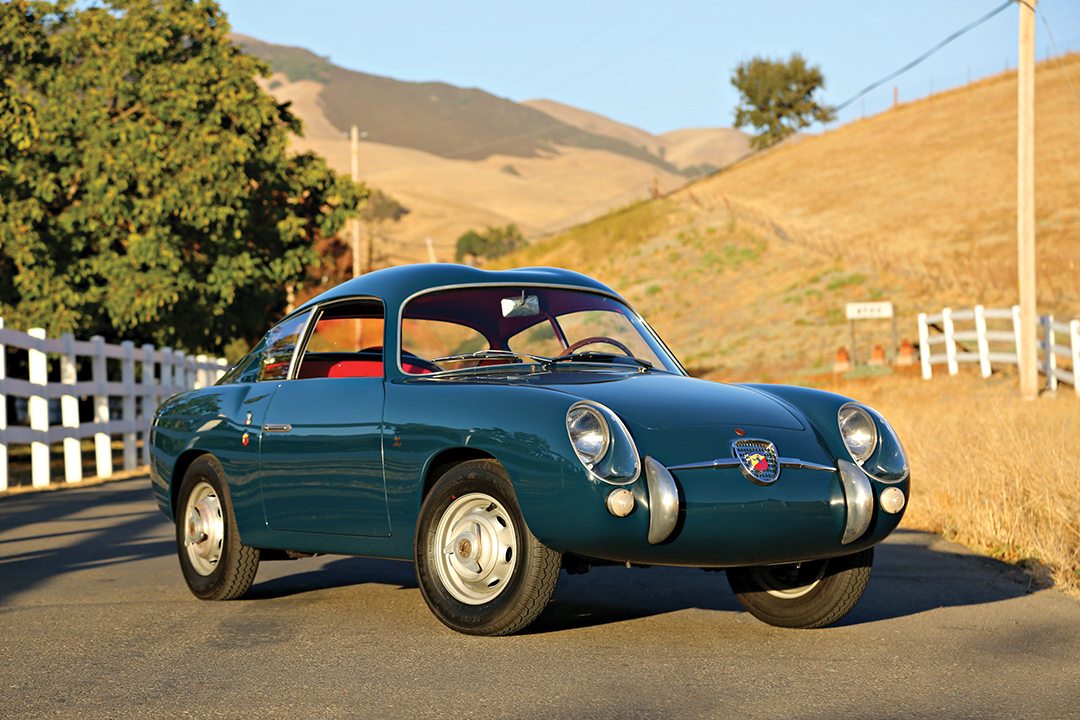
As Road &Track reported six decades ago, “Not only is the Zagato tremendous fun to drive, one also feels safe at all times. The car is easy to drive, steady at speed and nimble in traffic. True, the behemoths with the long, low look do tower menacingly in heavy traffic, but when the lights change this little car leaps forward in a manner that comes as a bit of a shock to most people up there.” Again, this car is fun, both for the driver and the observer. The smiles this car receives when seen rolling down the street are priceless.
The current owner has displayed the car at the Concorso Italiano in Monterey, The Quail in Carmel, the Hillsborough and Danville Concours among others, but also really enjoys taking it to the local Cars & Coffee where it always draws a crowd of onlookers. “Everyone loves Abby,” says Solomon, referring to the car by the nickname he bestowed upon it. “And so do I.”
Click here to order either the printed version of this issue or a pdf download of the print version.


